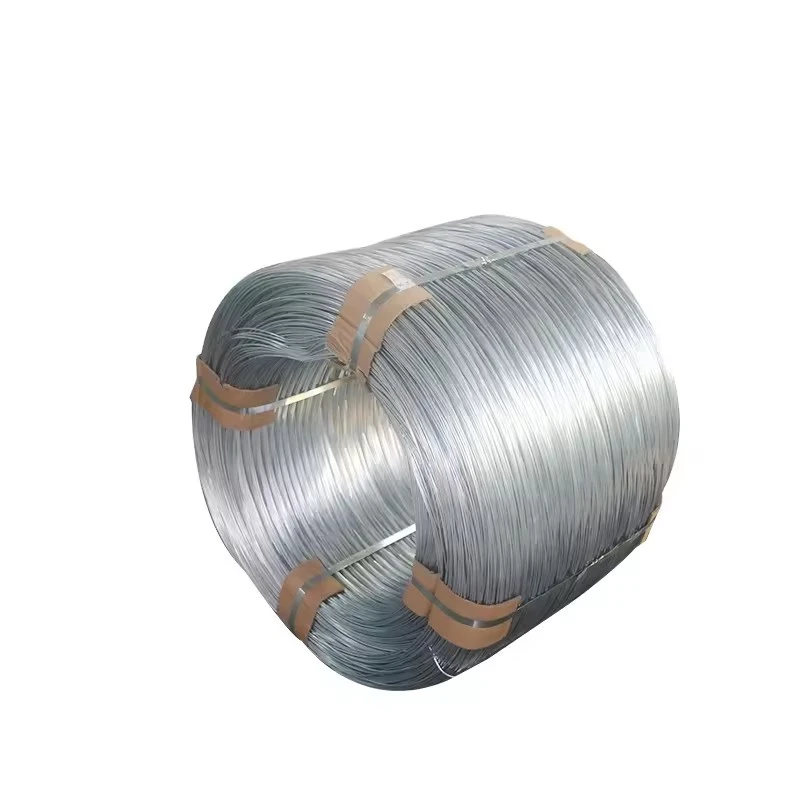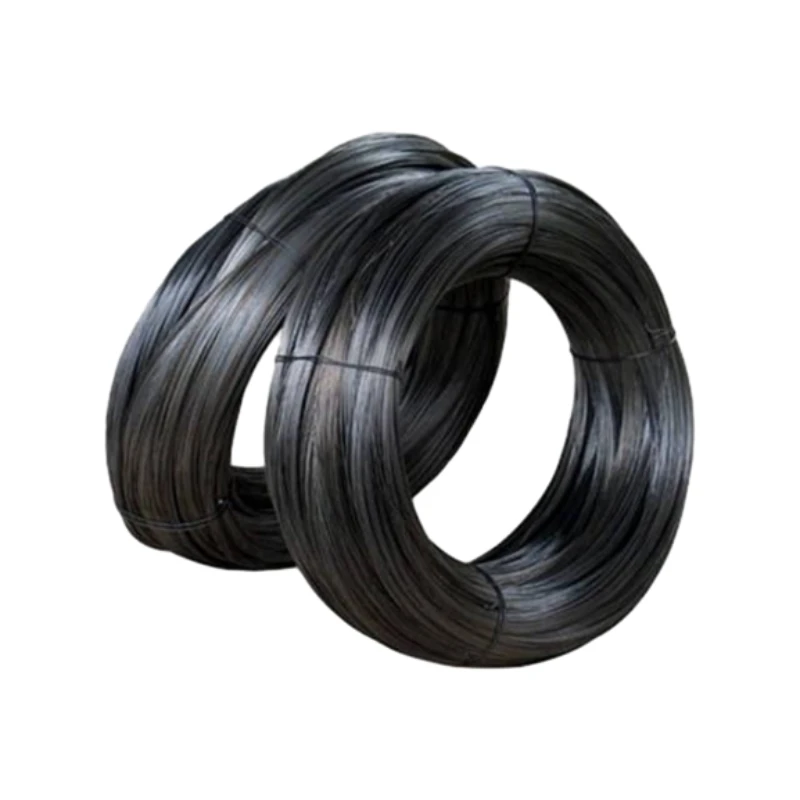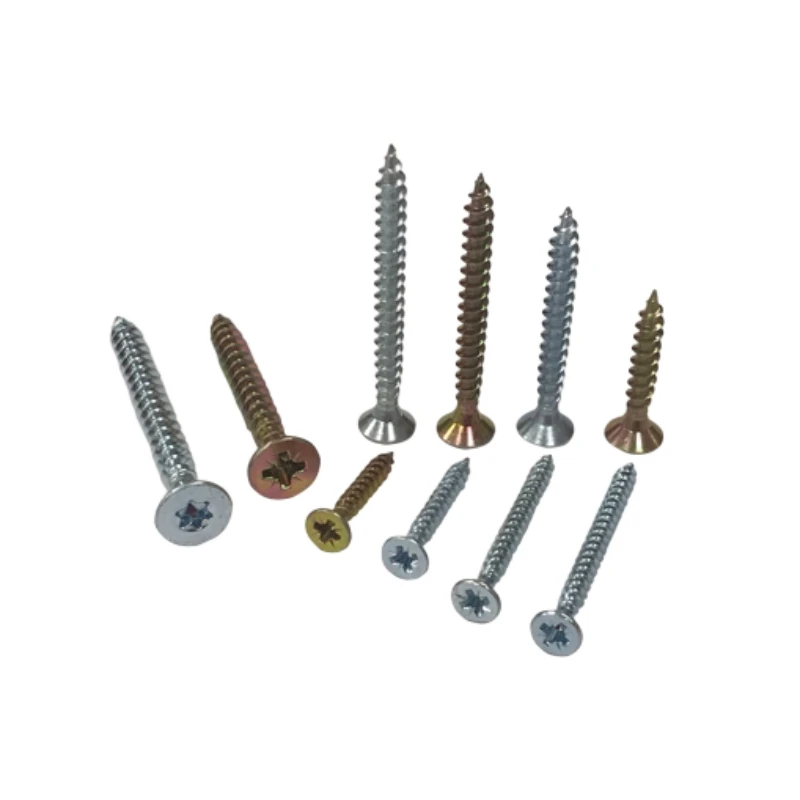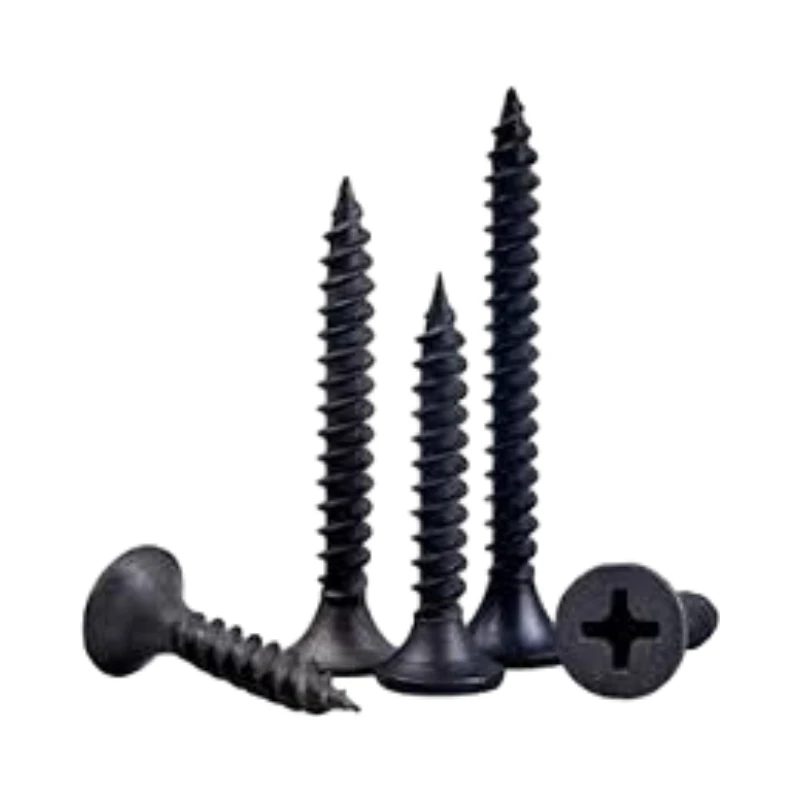
Talk With Us
+86-13601661296
Email Address
admin@sxjbradnail.com22 Gauge Fine Wire Staples: Strong Hold, Minimal Impact
The Indispensable Role of 22 Gauge Fine Wire Staples in Modern Manufacturing and Precision Assembly
In the intricate world of manufacturing and assembly, the choice of fastening solution profoundly impacts product integrity, operational efficiency, and overall cost-effectiveness. Among the myriad options, 22 gauge fine wire staples have emerged as a cornerstone for applications demanding precision, strength, and minimal material impact. These specialized fasteners, particularly the type 71 22 gauge staples, are engineered for a broad spectrum of industries, providing secure attachments without compromising the aesthetics or structural integrity of delicate materials.
This article delves into the technical profundity, operational advantages, and strategic implications of integrating 22 gauge staples into advanced manufacturing processes. We will explore their detailed manufacturing journey, crucial technical specifications, diverse application scenarios, and the compelling benefits they offer, complemented by real-world data and expert insights.
Industry Trends and the Evolving Demand for Fine Wire Fasteners
The global manufacturing landscape is continuously evolving, driven by demands for higher quality, increased automation, and sustainable practices. In this environment, the market for 22 gauge fine wire staples is experiencing significant growth, particularly in sectors where delicate materials and precise assembly are paramount. According to recent market analysis (Market Research Future, 2023), the global industrial fasteners market, which includes fine wire staples, is projected to reach over USD 120 billion by 2028, with specialized fasteners showing a Compound Annual Growth Rate (CAGR) of 5-7%. This growth is fueled by expanding automotive interiors, furniture, upholstery, and modular construction industries, all of which rely heavily on efficient and discreet fastening solutions.
Manufacturers are increasingly seeking staples that offer superior holding power, resistance to corrosion, and ease of application with pneumatic staplers. The emphasis is on fasteners that prevent material splitting, offer a flush finish, and maintain structural integrity over the product's lifespan. The adoption of advanced coatings and materials, such as galvanized or stainless steel variants of the 22 gauge staple, further expands their utility in diverse environments requiring enhanced durability and aesthetic finesse. The trend towards lightweighting and miniaturization in product design also bolsters the demand for fine-gauge fasteners that provide robust hold without adding bulk.
The Meticulous Manufacturing Process of 22 Gauge Fine Wire Staples
The production of high-quality 22 gauge fine wire staples is a sophisticated process that begins with stringent material selection and involves multiple precision engineering stages. This meticulous flow ensures that each staple meets exacting performance standards, essential for critical applications requiring consistent dimensions and reliable fastening.
Key Stages in Manufacturing:
- 1. Wire Rod Selection and Surface Preparation: The foundation of a superior staple lies in its raw material. High-tensile steel wire, typically with a carbon content optimized for strength and ductility, is chosen. This wire often undergoes galvanization (zinc coating) for enhanced corrosion resistance, or stainless steel (e.g., AISI 304 or 316 grade) is selected for environments demanding extreme durability and hygiene. The wire rod must adhere to strict metallurgical standards to ensure consistent gauge and purity. Before drawing, the wire is descaled and cleaned to remove surface impurities, preventing defects in the final wire.
- 2. Precision Wire Drawing: The selected wire rod is meticulously drawn through a series of progressively smaller dies to achieve the precise 22 gauge diameter (approximately 0.71 mm or 0.028 inches). This cold-working process increases the wire's tensile strength, improves its fatigue resistance, and refines its surface finish, which is critical for optimal feed in pneumatic tools and smooth penetration into target materials. Each drawing step is carefully controlled to maintain dimensional accuracy within tight tolerances.
- 3. Wire Flattening and Shaping: Post-drawing, the round wire may be further processed by flattening or shaping rolls to create the specific cross-sectional geometry required for the staple's crown and legs. This engineered profile ensures proper alignment within the stapler magazine, consistent driving characteristics, and a secure hold upon penetration, especially for type 71 22 gauge staples which feature a specific, often slightly flattened, crown design.
- 4. Forming and Cutting Operations: Multiple strands of precisely shaped wire are simultaneously fed into a high-speed staple-forming machine. Here, advanced tooling bends the wires into the iconic "U" shape of the staple. Immediately following the forming, precision cutting dies sever individual staples from the continuous wire strands, ensuring highly accurate leg lengths. The synchronization and accuracy of this stage are paramount for producing consistent staple dimensions and sharp chisel points, which facilitate clean penetration.
- 5. Adhesive Application and Polymer Bonding: A critical step for creating coherent "sticks" of staples is the uniform application of a specialized thermosetting polymer adhesive. This adhesive is precisely applied along the crown of the staple stick, bonding individual staples together without interfering with their ability to separate cleanly when fired from a tool. This polymer bonding agent is crucial for maintaining staple stick integrity during handling, loading, and high-speed pneumatic firing, preventing premature separation or jamming.
- 6. Drying and Curing of Adhesive: After adhesive application, the bonded staple sticks pass through a controlled drying or curing oven. This process hardens and strengthens the polymer bond, creating a robust stick that withstands the stresses of packaging, transport, and rapid tool operation. The curing parameters are meticulously controlled to achieve optimal adhesion without compromising the steel's properties.
- 7. Rigorous Quality Control and Testing: Throughout the entire manufacturing process, from raw material inspection to finished product, rigorous quality control checks are performed. This includes visual inspections for surface defects, precise dimensional measurements (crown width, leg length, wire gauge, and point geometry) using optical and laser measurement systems, and destructive testing. Destructive tests involve tensile strength testing of the wire, withdrawal resistance testing of fired staples in various materials, and adhesion tests to verify stick integrity. Staples are also subjected to operational tests in pneumatic tools to confirm jam-free performance. Compliance with international standards such as ISO 9001 (International Organization for Standardization, 2015) for quality management systems and relevant ASTM specifications (e.g., ASTM F1667 for fastener dimensions and performance, ASTM International, 2020) is continuously verified. This comprehensive testing regimen ensures extended service life and reliability.
- 8. Packaging and Distribution: Finished staple sticks are accurately counted, bundled, and then packed into protective cartons, often with moisture-resistant inner packaging. This final step ensures the staples reach the end-user in optimal condition, ready for high-volume industrial use.
Advantages in Typical Application Scenarios:
The precision and strength inherent in the manufacturing of 22 gauge fine wire staples translate directly into significant advantages for target industries. For instance, in sophisticated furniture manufacturing, the consistent dimensions and superior bonding of these staples enable high-speed automated upholstery lines, leading to energy savings through reduced cycle times and minimized rework. The use of galvanized or stainless steel variants offers significant corrosion resistance, critical for products exposed to varying humidity levels or specific chemical treatments, thereby extending the product's lifespan. In automotive interior assembly, the fine wire profile ensures that fasteners create minimal impact on delicate fabrics and composite panels, preserving aesthetic quality and preventing material degradation, a key factor in ensuring long-term structural integrity and passenger comfort. This meticulous production ensures that each staple delivers peak performance, translating into enhanced durability and reduced operational overhead for manufacturers.
Technical Specifications and Performance Parameters
Understanding the precise technical specifications of 22 gauge staples is crucial for engineers and procurement professionals to ensure optimal performance and compatibility with pneumatic tools. The Furniture Staple - 22 Gauge 14 Series Fine Wire Staple, for example, exemplifies the robust engineering behind these fasteners, tailored for precision and durability.
Product Specification Table: Furniture Staple - 22 Gauge 14 Series Fine Wire Staple
| Parameter | Specification |
|---|---|
| Gauge | 22 Gauge (0.71 mm / 0.028 inches) |
| Wire Type | Fine Wire (14 Series) |
| Crown Width | 9.0 mm - 11.5 mm (Standard for Type 71/14 Series) |
| Leg Lengths Available | 6 mm, 8 mm, 10 mm, 12 mm, 14 mm, 16 mm |
| Material Composition | High-Tensile Steel Wire (Carbon Steel, C1008-C1022 equivalent) |
| Corrosion Protection | Electro-galvanized (min. 5-7 microns zinc coating), Stainless Steel (304/316) options |
| Adhesive Type | Polymer bonding agent for stick integrity |
| Typical Tensile Strength | 900-1100 MPa (for high-tensile steel, post-drawing) |
| Withdrawal Resistance | Up to 25-40 lbs (depending on material & leg length, tested as per ASTM F1667) |
| Point Type | Chisel Point (standard for clean penetration) |
| Compliance Standards | Meets or exceeds ASTM F1667, ISO 9001 quality standards |
The 14 Series designation often refers to the specific crown width and shape, designed for optimal compatibility with a wide range of pneumatic staplers that accept type 71 22 gauge staples. Precision in manufacturing ensures minimal tool jamming, consistent penetration depth, and a strong, durable hold critical for high-volume production environments.

Diverse Application Scenarios for 22 Gauge Staples
The versatility and precision of 22 gauge fine wire staples make them indispensable across a multitude of industries, particularly where delicate materials, aesthetics, and strong yet discreet fastening are required. Their fine gauge minimizes material displacement and leaves a nearly invisible footprint, providing both functional strength and aesthetic appeal.
- Furniture Manufacturing: This is arguably the primary and most demanding application. From attaching fabric and leather upholstery to wooden frames, securing spring clips, or assembling decorative trim, these staples provide a strong, unobtrusive hold. Their fine wire minimizes damage to delicate fabrics and finished surfaces, preventing tearing and creating a clean, professional finish.
- Upholstery and Reupholstery: Critical for securing new and old fabrics, webbing, and padding in chairs, sofas, and automotive seating. The precise penetration of 22 gauge staples ensures fabric integrity and prevents unsightly bulges or tears, essential for high-quality finished products.
- Automotive Interior Trim: Used extensively in the automotive sector for securing headliners, door panels, carpet underlays, and seat covers. The low profile of the staple prevents protrusions that could affect passenger comfort or vehicle aesthetics, while providing durable attachment that withstands vibrations and temperature fluctuations.
- Cabinetry and Joinery: For attaching thin back panels, drawer bottoms made from MDF or plywood, and delicate decorative moldings where a hidden fastener is desired, or where nailing would risk splitting the wood or leaving visible marks.
- Picture Framing: Securing backing boards, dust covers, and even sometimes stretcher bars for canvas art. The fine wire prevents splitting delicate frame materials and offers a clean finish crucial for artistic presentation.
- Light Packaging and Crating: Used for assembling lightweight wooden crates, securing internal packaging materials, or attaching labels where a robust yet non-intrusive fastener is needed, especially when working with sensitive goods.
- Crafts and Hobbies: In various artisanal applications requiring precise fastening without bulky hardware, ensuring the integrity and aesthetic of creative projects.
Each application benefits from the controlled penetration, superior holding power, and minimal visibility offered by this specific staple gauge, contributing to both the functional performance and the finished appearance of products.
Technical Advantages and Performance Metrics
The technical advantages of employing high-quality 22 gauge fine wire staples extend beyond mere fastening. They are engineered to enhance overall product quality, manufacturing efficiency, and structural longevity, addressing specific challenges faced in precision assembly.
- Reduced Material Splitting and Damage: The exceptionally fine diameter of the wire (0.71 mm) allows for penetration with minimal fiber displacement, significantly reducing the risk of splitting delicate woods (e.g., hardwoods, exotic veneers), engineered boards (MDF, particleboard), or tearing fragile fabrics. This is a crucial advantage over larger gauge fasteners that can cause irreversible damage.
- Superior Holding Power-to-Size Ratio: Despite their slender profile, precisely formed 22 gauge staples deliver exceptional withdrawal resistance. The sharp chisel points ensure clean, deep penetration, and the staple's U-shape, coupled with optimal leg length, creates a robust mechanical lock within the material matrix, often outperforming nails in specific applications where lateral sheer strength is not the primary concern.
- Aesthetic Integration and Discretion: Their minimal visual impact makes them ideal for applications where fasteners need to be discreet or entirely hidden. The small crown size results in a nearly invisible fastening point, which is particularly valuable in furniture upholstery, automotive interiors, and decorative paneling where a flawless, high-end finish is paramount.
- Enhanced Operational Efficiency and Productivity: Designed for high-speed pneumatic staplers, these staples ensure rapid, consistent, and jam-free operation. The uniform adhesion of the staple sticks, combined with precise dimensional tolerances, minimizes downtime due to tool malfunctions, translating into increased production rates and reduced labor costs in demanding assembly lines.
- Robust Corrosion Resistance Options: Available in electro-galvanized high-tensile steel and specialized stainless steel (304/316) options, these staples provide excellent protection against rust and degradation. This ensures the longevity of the fastened components, even in fluctuating environmental conditions (e.g., humidity, temperature variations), thereby extending the service life of finished products and reducing warranty claims.
- Versatility with Diverse Materials: Capable of reliably fastening a wide array of substrates including various types of wood (softwoods, hardwoods), plastics, composite panels, fabrics (natural and synthetic), leathers, and insulation materials without causing undue stress or damage, making them a highly adaptable fastening solution.
Comparative Analysis: 22 Gauge vs. Larger Gauges
| Feature | 22 Gauge Fine Wire Staple (Type 71/14 Series) | 18 Gauge Narrow Crown Staple (e.g., Type 90) | 16 Gauge Wide Crown Staple (e.g., Type 80) |
|---|---|---|---|
| Wire Diameter | ~0.71 mm (0.028") | ~1.02 mm (0.040") | ~1.40 mm (0.055") |
| Material Splitting Risk | Very Low, ideal for delicate substrates | Moderate, especially in hardwoods/thin materials | Higher, primarily for structural applications |
| Visual Impact | Minimal, often invisible, excellent for aesthetics | Noticeable, may require filling/finishing | Very noticeable, for functional hidden applications |
| Holding Power | Excellent for its size, precise holding power without bulk | Stronger for semi-structural applications, heavier loads | Maximum holding power, high shear strength |
| Ideal Applications | Upholstery, trim, delicate assembly, decorative work, automotive interiors | Cabinetry, subflooring, light framing, casebacks, general construction | Roofing, sheathing, heavy-duty crating, large construction framing |
| Tool Compatibility | Specific 22 gauge fine wire staplers (e.g., Type 71 guns) | 18 gauge narrow crown staplers | 16 gauge wide crown staplers |
Vendor Comparison and Customized Solutions
Selecting the right supplier for 22 gauge fine wire staples is as critical as the product itself. Reputable vendors distinguish themselves through consistent quality, comprehensive technical support, and the ability to offer tailored solutions to meet unique industrial demands. A strategic partnership with an experienced supplier can significantly enhance operational efficiency and product quality.
Key Vendor Differentiators for 22 Gauge Staples:
- Unwavering Quality Assurance and Certifications: Top-tier manufacturers operate under strict quality management systems, evidenced by internationally recognized certifications like ISO 9001:2015. This assures meticulous traceability of materials, consistency in manufacturing processes, and adherence to global production standards. Reputable suppliers provide comprehensive data sheets with verifiable test results (e.g., withdrawal force, shear strength, salt spray corrosion resistance) for their 22 gauge staple products, ensuring transparency and trust.
- Specialized Material Expertise: A deep understanding of metallurgy and material science is paramount. Leading vendors possess the expertise to recommend optimal wire materials (e.g., specific grades of galvanized steel with enhanced zinc coatings, various stainless steel alloys like 304 or 316) and adhesive formulations for specific environmental conditions, material substrates, or application stresses, ensuring peak performance and longevity.
- Robust Production Capacity and Supply Reliability: The ability to consistently supply large volumes of high-quality 22 gauge staples without compromising lead times is crucial for high-volume manufacturers. Dependable vendors have diversified production lines, robust inventory management, and efficient global logistics to ensure uninterrupted supply.
- Comprehensive Technical Support and Consultation: Experienced and authoritative vendors provide invaluable technical assistance. This includes expert guidance in selecting the correct staple specifications for novel applications, optimizing tool performance to minimize jamming and maximize output, and on-site troubleshooting for complex application issues.
- Years of Industry Experience and Partner Clients: A long-standing presence in the industry, coupled with a portfolio of satisfied partner clients (including leading OEMs and renowned furniture manufacturers), attests to a vendor's proven track record and reliability in delivering consistent, high-performance fasteners.
Customized Solutions for Unique Requirements:
For specialized or highly demanding applications, standard off-the-shelf 22 gauge staples may not fully meet precise performance criteria. Leading suppliers offer comprehensive customization options to engineer fasteners perfectly suited to unique industrial requirements:
- Custom Leg Lengths and Crown Widths: Tailoring staple dimensions to precisely fit specific material thicknesses, composite layers, or unique tool specifications, optimizing penetration and holding power.
- Specialty Materials and Advanced Coatings: Beyond standard galvanized steel, options include specific stainless steel grades for medical-grade upholstery or marine environments, specialized polymer coatings for enhanced adhesion in challenging substrates, or friction-reducing coatings for extremely delicate materials.
- Optimized Point Types: While chisel points are standard for clean penetration, custom point designs (e.g., divergent points for enhanced spread within material, blunt points for preventing through-penetration in thin materials) can be developed to optimize fastening performance in highly specific materials or applications.
- Tailored Packaging Solutions: Custom packaging can be designed for seamless integration with automated staple feeding systems, robotic assembly lines, or specific warehousing and logistics requirements, further reducing handling costs and improving line efficiency.
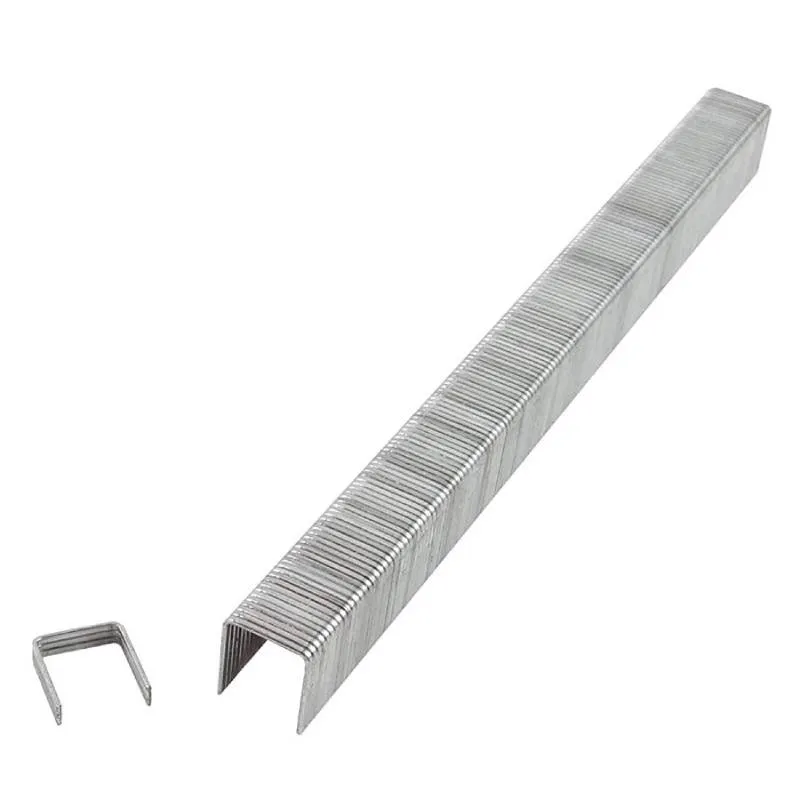
Application Case Studies and Customer Successes
Real-world applications underscore the tangible benefits of utilizing high-quality 22 gauge fine wire staples. These case studies highlight how precision fastening, coupled with superior material quality and manufacturing consistency, contributes significantly to product excellence, operational efficiency, and overall business success across various demanding industries.
-
Case Study 1: Luxury Upholstered Furniture Manufacturer Optimization
A renowned manufacturer of high-end upholstered furniture faced persistent challenges with inconsistent staple penetration, leading to occasional fabric tears and visible blemishes when using generic 22 gauge staple products. This resulted in increased rework rates (averaging 8% of production), significant material waste (especially with expensive fabrics), and delayed delivery schedules, impacting brand reputation and profitability. Upon partnering with a specialized vendor and implementing their ISO-certified type 71 22 gauge staples, manufactured with ultra-precise wire drawing and an advanced polymer bonding agent, they observed a dramatic transformation. Rework due to staple-related issues decreased by over 70%, and material waste was virtually eliminated. The superior consistency in staple stick integrity led to a 20% reduction in tool jams, directly boosting line productivity by 15%. This strategic switch not only enhanced the aesthetic quality and durability of their furniture but also resulted in substantial cost savings and improved order fulfillment, solidifying their market position.
-
Case Study 2: Automotive Seating Component Supplier Durability Enhancement
An OEM supplier specializing in automotive interior seating components required a fastening solution that could securely attach complex synthetic fabrics and foam to engineered plastic seat frames. The fasteners needed to withstand rigorous automotive-grade vibration tests, extreme temperature cycles, and offer superior long-term corrosion resistance for a vehicle's multi-year lifespan. Traditional fasteners caused minor surface indentations and exhibited insufficient pull-out strength after accelerated aging and environmental exposure tests. Implementing custom-formulated, stainless steel 22 gauge fine wire staples with a specific leg length and a specialized anti-corrosion coating provided the ideal solution. These custom staples demonstrated 35% higher withdrawal resistance and maintained their structural integrity through simulated 10-year vehicle life tests, passing all OEM environmental and vibration specifications with zero failures. This direct contribution to component longevity enabled the supplier to secure new contracts and reinforce its reputation for quality.
-
Case Study 3: Packaging Solutions Provider for Sensitive Electronics
A company manufacturing custom wooden crates and heavy-duty corrugated cardboard boxes for the safe transport of sensitive electronics faced challenges with packaging failure during transit. Using inappropriate fasteners often led to premature box delamination or structural compromise, resulting in costly product damage claims. By adopting specialized galvanized 22 gauge staples engineered for optimal penetration into corrugated materials without tearing, they achieved significantly enhanced structural integrity for their protective packaging. The fine wire design minimized fiber damage in the cardboard, while the robust galvanization ensured protection against moisture and humidity fluctuations during long-distance shipping. This led to a measurable 12% reduction in product damage claims related to packaging failure and markedly improved customer satisfaction and supply chain reliability for high-value goods.
Trustworthiness: FAQ, Lead Time, Warranty, and Support
Establishing and maintaining trust with B2B clients requires transparency, reliability, and a robust support infrastructure. We are committed to providing exceptional service alongside our high-performance 22 gauge fine wire staples, ensuring a seamless and confident partnership.
Frequently Asked Questions (FAQ):
- Q: What key factors differentiate your 22 gauge staples from standard market offerings?
- A: Our 22 gauge staples are manufactured using premium-grade, high-tensile steel wire, undergo rigorous ISO-certified quality control checks at every stage, and feature an optimized, high-strength polymer adhesive bonding system for superior stick integrity. This results in minimal tool jamming, consistent penetration, and exceptional withdrawal resistance, ensuring reliable and efficient performance in critical applications. We also offer advanced material and coating options.
- Q: Are your Furniture Staple - 22 Gauge 14 Series Fine Wire Staples compatible with all 22 gauge staplers?
- A: Our Furniture Staple - 22 Gauge 14 Series Fine Wire Staple is precisely engineered to be fully compatible with industry-standard Type 71 22 gauge fine wire staplers from major manufacturers. We highly recommend verifying your specific tool's specifications to ensure optimal fit and performance, and our technical team is available to assist with compatibility inquiries.
- Q: Do you offer custom sizes, materials, or finishes for specialized applications?
- A: Absolutely. We specialize in providing customized solutions to meet unique industrial requirements. Please contact our dedicated technical sales team with your specific needs regarding custom leg lengths, crown widths, specialized materials (e.g., specific stainless steel grades), unique anti-corrosion coatings, or divergent point types. We will work closely with you to develop an optimal fastening solution.
- Q: What are the environmental considerations for your staples?
- A: We are committed to sustainable manufacturing practices. Our staples are made from high-quality steel, which is a widely recyclable material. Our production processes are designed to minimize waste and energy consumption. The inherent durability and long service life of our 22 gauge staples contribute to the extended lifespan of finished products, thereby reducing overall material consumption and environmental impact.
Lead Time and Fulfillment Logistics:
We understand the critical nature of supply chain efficiency and reliable delivery in B2B operations. Our standard lead time for stock 22 gauge staples is typically 3-5 business days for domestic orders and 7-14 business days for international shipments, subject to order volume, customization requests, and destination logistics. For highly customized orders or very large volumes, lead times will be quoted individually based on complexity of specifications and current production schedules, usually ranging from 3-6 weeks after design approval. We maintain robust inventory levels, leverage advanced production scheduling systems, and partner with efficient global logistics providers to ensure timely and reliable fulfillment of all orders. Expedited shipping options are also available upon request for urgent requirements.
Comprehensive Warranty and After-Sales Support:
All our 22 gauge fine wire staples are backed by a comprehensive product warranty, guaranteeing them against manufacturing defects and material flaws for a period of 12 months from the date of purchase. Our commitment to client satisfaction extends far beyond the point of sale. We provide a dedicated team of highly experienced technical support specialists who are readily available to assist with product selection, offer detailed application guidance, optimize tool performance, and troubleshoot any operational queries you may encounter. We pride ourselves on offering expert, responsive assistance to ensure the optimal performance of our fasteners within your unique production environment, minimizing downtime and maximizing efficiency. Customer satisfaction is our highest priority, and we are committed to providing swift, effective, and professional resolutions to any concerns or technical challenges.
For immediate assistance or to discuss your specific requirements, please do not hesitate to contact our customer service team via phone or email. Our support channels are accessible during standard business hours, and our goal is to forge a reliable and long-term partnership in your continued success.
Conclusion
The strategic deployment of high-quality 22 gauge fine wire staples is a fundamental pillar for achieving excellence in precision manufacturing and assembly. Their nuanced technical specifications, coupled with a meticulously controlled manufacturing process, yield fasteners that are indispensable for a wide array of industries, from high-end furniture and demanding upholstery to advanced automotive interiors and specialized packaging. By minimizing material stress and damage, providing robust yet discreet fastening, and significantly enhancing production efficiency, these staples stand as a testament to advanced material science and precision engineering. For discerning B2B decision-makers and engineers, investing in superior 22 gauge staples translates directly into enhanced product longevity, reduced operational costs, and a significant competitive advantage in a demanding global market.
References
- ASTM International. (2020). ASTM F1667 - 19, Standard Specification for Driven Fasteners: Nails, Spikes, and Staples. West Conshohocken, PA: ASTM International.
- International Organization for Standardization. (2015). ISO 9001:2015, Quality management systems — Requirements. Geneva, Switzerland: ISO.
- Market Research Future. (2023). Industrial Fasteners Market Research Report - Global Forecast to 2030.
- Metals Handbook Desk Edition. (2nd ed.). (1998). ASM International. (for general material properties and wire drawing processes).
- Senco Brands, Inc. (n.d.). Fastener Selection Guide. (Information on staple types and applications, based on industry-standard literature).
-
2 Inch Brad Nails - Precision Fastening for Woodworking & ConstructionNewsNov.24,2025
-
Affordable Quality: Understanding Cheap Brad Nails and Their Global ImpactNewsNov.24,2025
-
Type F Brad Nails: Precision Fasteners for Quality Craftsmanship & IndustryNewsNov.23,2025
-
High-Quality Type 47 Brad Nails for Precision & Durability | SXJ IndustrialNewsNov.23,2025
-
T47 Nail: The Ultimate Guide to Industrial and Construction ApplicationsNewsNov.22,2025
-
Everything You Need to Know About T Head Brad Nails | Global Fastening SolutionsNewsNov.22,2025

